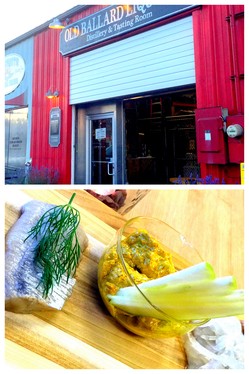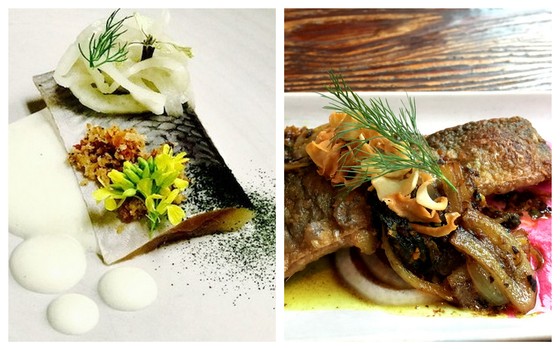It's the third annual Alaska Herring Week, and several dozen leading restaurants and retail seafood vendors in the Seattle area are showcasing unique dishes and products featuring one of Alaska's unsung "seafood heroes." (The full list is here.)
"Our hope is to begin expanding it to other cities beyond Seattle next year," says Zachary Lyons, a spokesman for the local agricultural collaborative known as FORKS: Farms, Oceans, Ranches, Kitchens.
There are a few other herring events in other markets; New York, for example, but it does only Atlantic herring.
Alaska herring is one of the largest, most abundant and sustainable fisheries in the world, according to the Alaska Seafood Marketing Institute, but has largely disappeared from US menus and fish markets.
The Alaska Herring Development Project aims to restore herring to its "proper place" as a commercial fishery for human consumption. "As one of our region's great, wild seafood resources, herring is abundant, affordable, sustainable, delicious and nutritious," says the founder of the project, a nano-distiller in Seattle's Ballard neighborhood who goes by the single name of Lexi. "It is part of our culture, and it comes with a rich and colorful history," she says. Lexi's Old Ballard Liquor Co. produces aquavit and other traditional spirits to accompany herring dishes.
The Alaska Herring Development Project is partnering with Seattle chefs and grocers to restore the Seattle market for herring as a high-quality food. North Pacific Seafoods, which produces the popular Bristol Bay sockeye salmon in Naknek, Alaska, during the summer, is producing fillets from Alaska's largest herring fishery in Togiak, Alaska, for use by chefs and sale by grocers during Alaska Herring Week.
The Togiak herring fishery is sustainably managed by the Alaska Department of Fish and Game. The herring harvest is based on a sustainable level of the herring biomass.
 Currently, the primary market for Alaska herring is for their eggs in Japan, but changing tastes in Japan are reducing this market, both value and volume.
Currently, the primary market for Alaska herring is for their eggs in Japan, but changing tastes in Japan are reducing this market, both value and volume.
A very small portion of the Alaska Herring Fishery is used as bait for species like halibut and crab.
Hence the push for herring in the Lower 48.
Which explains why we have herring smoked, pickled, fried. We have herring tartare; herring boquerones (normally served in Spanish tapas bars, but with anchovies); herring panzanella; crispy fried whole herring; Sichuan-dressed herring with Walla Walla onions; herring with buccatini pasta; smoked herring salad; herring with a green salsa; lemon-dill herring (a deli dish); herring in saor; even herring as a teriyaki sandwich.
"It's an opportunity to taste this delicious and healthful fish, while supporting the fishermen who bring Alaska herring from sea to table and at the same time supporting a fishery dedicated to providing a sustainable food supply," Lyons said.

Leave a comment